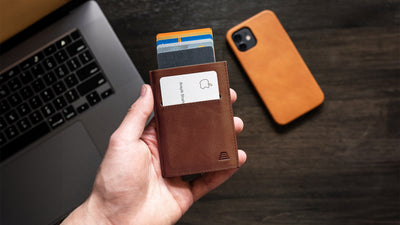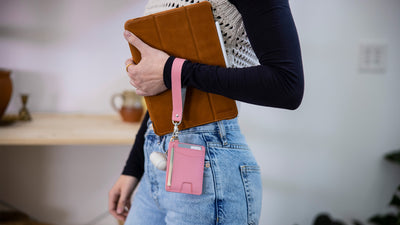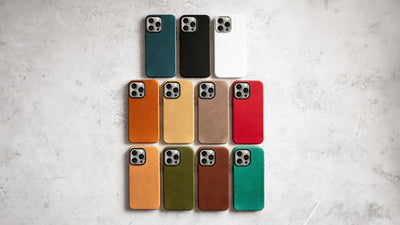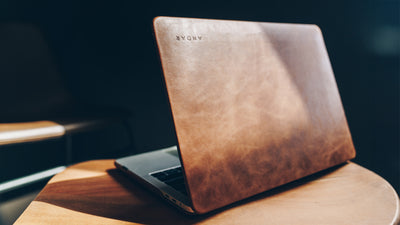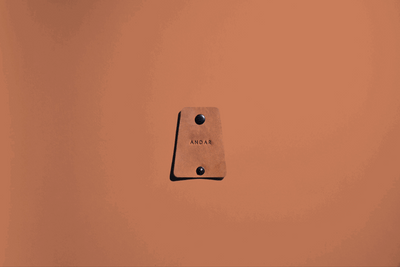The Blog
Full Grain vs. Split Leather: What's the Difference?
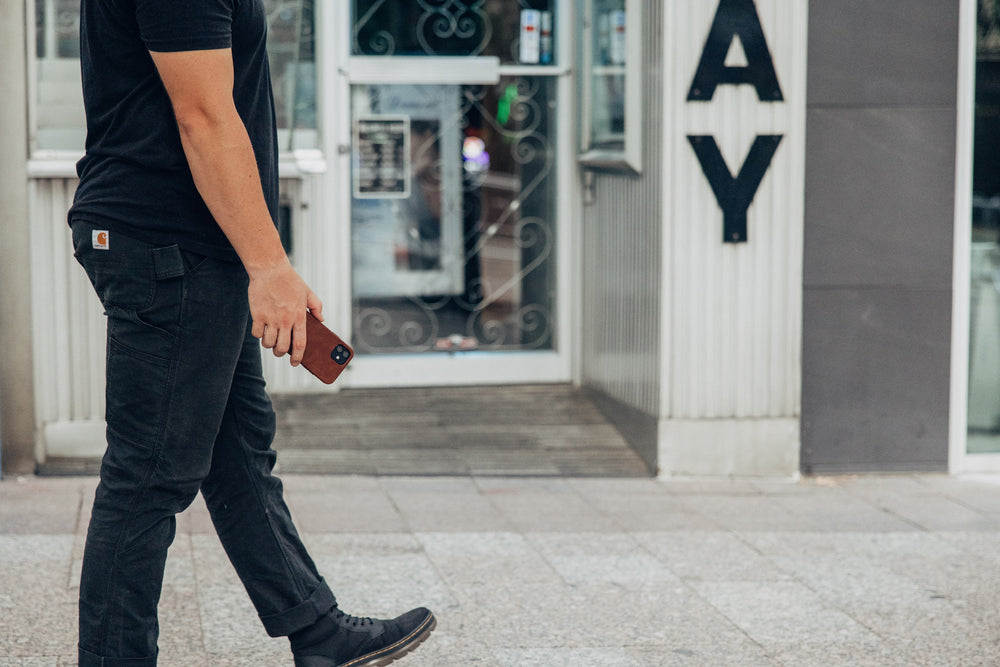
Like any industry that has been around for several hundred years, the leather industry is flush with terms, jargon, and other language that is assumed to be understood even by the consumer. Unfortunately, this is not always the case, and nowadays, there is a tendency for leather sellers to use this imbalance of industry knowledge against the consumer.
This is generally done with bloated prices for low-quality leather that has been tagged with vague terms such as “genuine,” “Italian,” or “bonded.” All of these terms may seem to mean one thing, but may not live up to the supposed quality that their name hints to.
We at Andar want to be different and help clear up any confusion about our ages-old industry. Instead of hiding behind terms, we want to explain them, so you as the consumer know exactly what you are buying and can feel confident in the quality of your Andar item.
In this article, we will hash out one of the more confusing and alternative leathers: split leather. We will tell you how it’s made, how it differs from full-grain leather, and a few of its advantages and disadvantages. Hopefully, after this article, you will feel prepared and ready to make the proper decision for whatever your leather needs are!
How Split Leather Is Made
Each different name for leather will generally be differentiated by two major factors: what part of the cowhide the material is taken from or the process of processing and tanning that material. In our brief run-through of some of the major types of leather, we briefly explain these factors for each major type of leather.
This article will go more in-depth on how one of those major types is sourced and processed in contrast to our full-grain leather.
What Part of the Cowhide Is Split Leather From?
There are a few major parts of the cowhide that are the major differentiation between leather types. Working from the bottom up, we will explain each type and where split leather comes from, along with full-grain. Cowhide has several layers that all have different chemical properties. Each layer provides different advantages.
The bottom layer and the one that is never used to create real leather is the flesh. This layer is what attaches the cowhide to the meat of the cow. It is, as the name suggests, very fleshy and cannot be formed into leather.
Above this is the biggest section of usable cowhide, which is called the corium. The corium is three to four times thicker than any other part of the cowhide. This is what most low-to-mid-tier leathers are created from, as it is the most abundant by a significant margin.
Above this is what is called the grain-and-corium junction. Think of this as a very thin buffer between the two most major parts of the cowhide. It is normally about half the thickness of the grain and about a quarter of the corium.
The grain is the outermost layer of the cowhide. This part is the toughest, most fibrous, and durable portion of the cowhide. It makes top-grain and full-grain leather. It is the most desirable cut.
Of these layers, split leather comes from the corium and sometimes the junction.
How The Corium Turns Into Split Leather
Split leather is a somewhat new concept. Because of advancements in technology, we have been able to effectively and efficiently split the corium and grain without damaging it or cutting vertically into the cowhide, thus ruining the grain.
Instead, a machine called “The Splitter '' is used to separate the two by pulling the cowhide tot and running an extremely sharp blade quickly through the junction. Previously, the leather makers would either have to sand the flesh down until they had the corium, then cut vertically through the cowhide to get their desired piece.
This process would yield genuine leather, as this is a mixture of all parts of the cowhide into a mixed bag of grain and corium, corrupting both properties and advantages. Instead, by effectively splitting the two, we have split leather, which keeps the grain full and intact for use in making grain leathers.
Because of a large uptick in beef production, leather makers have fallen behind the production, and many cowhides go to waste. Splitting leather is actually a better solution to this problem than genuine leather because it produces a higher quality product more efficiently.
How it Is Different From Full-Grain Leather
Because split leather is made from a completely different part of the cowhide, there are going to be fundamental, even chemical differences between it and full-grain leather.
This section will break down some of the differences along with setting up some of the advantages and disadvantages that split leather has against full-grain leather.
Why it Is Less Durable
As explained above, the grain leathers are going to be more durable because they are located on the outside of the cowhide and are generally more fibrous than the corium or genuine leathers. Although genuine leathers take up a large amount of the market share, they are the least durable because of the treating process of the mixture of corium and grain. The diluted grain is actually weaker than a full corium product.
While this is initially a drawback to split leather, it is still superior over genuine and all PU or artificial leathers. Because it is still a full layer of the cowhide, the properties of the corium allow it to last longer than a poorly treated piece of grain leather.
Full-grain leather is then better suited for things such as wallets, belts, and purses because of its durability advantage. Our wallet, The Scout, is a great example of how full-grain leather can still be used to look sleek while staying durable. At Andar, we have an affection for full-grain leather that runs deep.
Yet it Is More Versatile
Because of a less fibrous construction, split leather is actually a bit more economical and versatile. It can be sanded and colored much more easily than full-grain leather can be. Therefore, it is a bit easier to make bags and furniture out of. It stretches more easily initially but can be left exposed to worse weathering and wearing effects because of its more fleshy construction.
On top of this, split leather can be used for items that are not expecting long use. Generally, split leathers will be used as a higher-end choice for fast fashion clothing. There are some more concerns with this, but it is most likely its largest piece of sourcing.
In comparison with genuine and PU leathers, it is far more ethical as it is generally sourced to decrease waste from top grain and full-grain leathers, but sometimes the ethical concerns turn buyers away.
The Full Grain Advantage
While split leather definitely has its time and place, most generally believe that no matter what product you find yourself needing, the higher grain leather will be a better choice. Not only does it look great, smell great, and feel great, it also wears much more beautifully.
In leather terms, we call this process the leather patina. It is essentially the unique and individual marks of wear and usage that develop in leather. This can happen with most real leather but happens best with full-grain leathers.
Split leather will specifically struggle to develop if the piece has been colored, dyed, or stretched past its natural shape. While this does not need to happen, it is a sign of quality and shows the beauty of all that leather has to offer.
On top of this, the durability of full-grain leather will keep it around for a long time with proper usage and care. If you are going to invest in leather, split leather will not be the type of leather that you should look at. Instead, turn your gaze upon full-grain leathers as they are affordable and will last much longer while keeping their distinctly leather feel.
Why It All Matters
Split leather has come around in recent years due to the advent of the splitter. It separates the split leather and the corium from the grain. Though it is not generally thought of as the highest end of quality for leather, it still has a specific and valuable place in the leather market due to its versatility and continuity with the cowhide itself.
When shopping for leather, look for natural-looking split leather as this will generally yield a higher quality product.. Best of all, research the advantages of full grain leather for the top bags, laptop cases, and even a decorative tassel.
Sources:
America Is Obsessed With Beef. But It Has No Use For Hides | LA Times
Genuine Leather Market Size 2021 Forecast to 2027 | Market Watch
Leather | History & Facts | Britannica